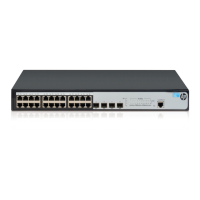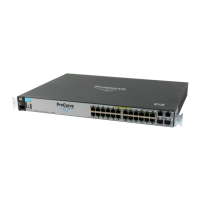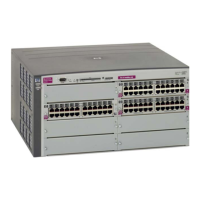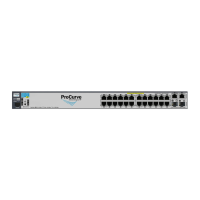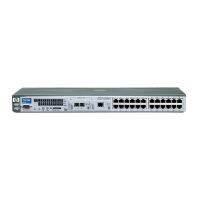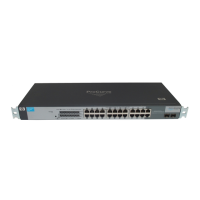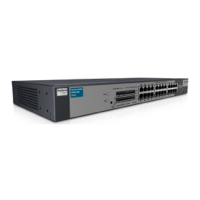Configuration Commands 127
Table 146 Virtual Router Configuration commands
Command Description
virtual-router <1-255>
interface <1-255>
Selects a switch IP interface (between 1 and 255). If the IP interface has the
same IP address as the
address option above, this switch is considered the
“owner” of the defined virtual router. An owner has a special priority of 255
(highest) and will always assume the role of master router, even if it must
preempt another virtual router which has assumed master routing authority. This
preemption occurs even if the
preemption option below is disabled. The
default value is 1.
Command mode: Router VRRP
virtual-router <1-255>
priority <1-254>
Defines the election priority bias for this virtual server. This can be any integer
between 1 and 254. The default value is 100.
During the master router election process, the routing device with the highest
virtual router priority number wins. If there is a tie, the device with the highest IP
interface address wins. If this virtual router’s IP address is the same as the one
used by the IP interface, the priority for this virtual router will automatically be
set to 255 (highest).
When priority tracking is used, this base priority value can be modified
according to a number of performance and operational criteria.
Command mode: Router VRRP
virtual-router <1-255>
timers advertise <1-255>
Defines the time interval between VRRP master advertisements. This can be any
integer between 1 and 255 seconds. The default value is 1.
Command mode: Router VRRP
[no] virtual-router <1-255>
preemption
Enables or disables master preemption. When enabled, if this virtual router is in
backup mode but has a higher priority than the current master, this virtual
router will preempt the lower priority master and assume control. Note that
even when
preemption is disabled, this virtual router will always preempt
any other master if this switch is the owner (the IP interface address and virtual
router
address are the same). By default, this option is enabled.
virtual-router <1-255>
enable
Enables this virtual router.
Command mode: Router VRRP
no virtual-router <1-255>
enable
Disables this virtual router.
Command mode: Router VRRP
no virtual-router <1-255>
Deletes this virtual router from the switch configuration.
Command mode: Router VRRP
show ip vrrp virtual-router
<1-255>
Displays the current configuration information for this virtual router.
Command mode: All except User EXEC
VRRP Virtual Router Priority Tracking configuration
These commands are used to modify the priority system used when electing the master router from a pool of virtual
routers. Various tracking criteria can be used to bias the election results. Each time one of the tracking criteria is met,
the priority level for the virtual router is increased by an amount defined through VRRP Tracking.
Criteria are tracked dynamically, continuously updating virtual router priority levels when enabled. If the virtual router
preemption option is enabled, this virtual router can assume master routing authority when its priority level rises
above that of the current master.
Some tracking criteria (virtual routers, interfaces, and ports below) apply to standard virtual routers,
otherwise called “virtual interface routers”. A virtual server router is defined as any virtual router whose IP address is
the same as any configured virtual server IP address.
NOTE: VRRP commands are available only on the GbE2c Layer 2/3 Ethernet Blade Switch.

